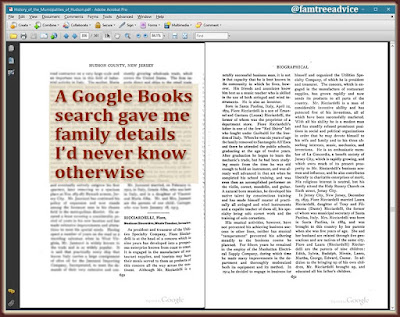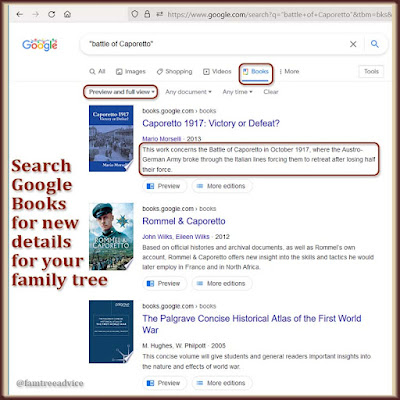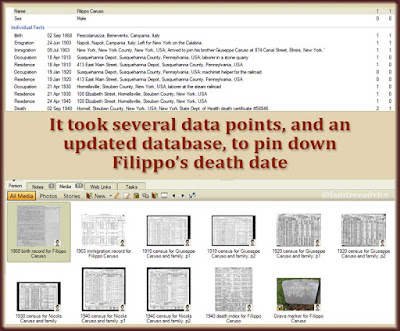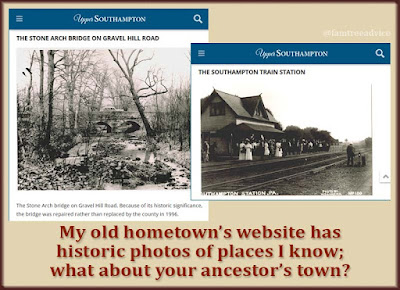Long-time reader of this blog, Suzanne, found two books that mention my great uncle. She had no luck on Newspapers.com, but she found him when she searched Google Books.
She encouraged me to pick up and continue the search. Two legal briefs help explain how my immigrant uncle and my great grandfather came to own a building. They were leasing it in 1905 from a brewing company—a company that may have had some bad lawyers. My ancestors parlayed this lease into ownership of the building where my mom was born.
What else might I find on Google Books? As usual, I didn't have much luck in searching for the names of my ancestors. Changing tactics, I searched for the names of my ancestral Italian hometowns. I searched for Santa Paolina, a small town in southern Italy, and I made a surprising discovery.
 |
| Imagine finding this one-of-a-kind biography of your ancestor. |
In my family tree is the 1873 birth record for my 2nd cousin 4 times removed, Fioravanti Ricciardelli. His great grandfather, Emanuele Ricciardelli, is my 5th great grandfather. One search result in Google Books is "History of the Municipalities of Hudson County, New Jersey," written by Daniel Van Winkle in 1924. This isn't what I expected when searching for my town.
The book details the lives of Hudson County's notable citizens, including my cousin Fioravanti. Thanks to the page-and-a-quarter devoted to my cousin, I learned:
- His father, also named Emanuele Ricciardelli, was a "Red Shirt" who fought under Giuseppe Garibaldi for Italy's freedom.
- I knew from vital records that Emanuele and his wife had only 4 children in Santa Paolina. Now I know why. The book says the family moved to another town that's a half hour away by modern transportation. That's unexpected. They may have had more children in their new town.
- My cousin Fioravanti was an accomplished musician, business owner, and inventor.
- In America, he married a distant cousin from Santa Paolina, also named Ricciardelli. They had 9 children in New Jersey.
- The book says Fioravanti raised and educated all his siblings.
This is the type of detail I never get to learn about my Italian relatives. Even if I had discovered the family in U.S. documents, they wouldn't give me this much detail. Without this book, this family was a dead end. What a wonderful find!
Start Your Google Books Search
To search Google Books, go to google.com and start a search as usual. Then click "Books" below the search box. Note: You may have to click the word "More" before you see the "Books" option. Next, for more satisfying results, click the words "Any view" and choose "Preview and full view." Now you can fully explore the best results. If you find something you want, you may be able to download the book as a PDF. Note: You can save a step by going straight to https://books.google.com.
 |
| With this Google Books search, I can learn more about the WWI battle that almost killed my grandfather. What can you find? |
Get creative with your searches. You never know what you'll find. Think about:
- People and Places. Try family and town names from your family tree. I found an 1888 Italian book about the history of my ancestral hometowns. It tells me their populations at the time.
- Historical Events. Which wars or other important events had an impact on your family? I'll search for the World War I battle where they captured my grandfather and imprisoned him for a year.
- Maps. I'd love to find a book with old maps of my towns of interest. The closest I came is a book with a folded-up map in the back. They didn't scan the unfolded map!
- Workplaces. Search for the company where your ancestor worked. What was happening when your relative worked there?
Devote one hour to Google Books and you'll understand more about your ancestors' lives. It's a massive resource. Thank you to Suzanne for reminding me to give it more attention.












